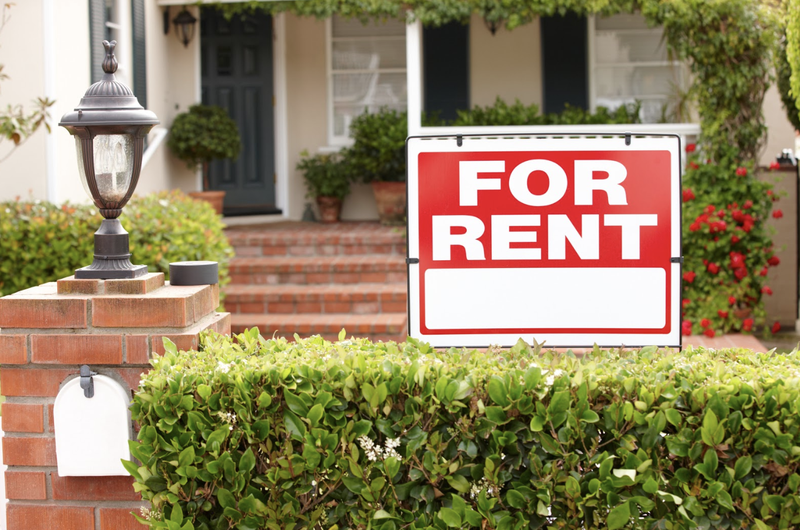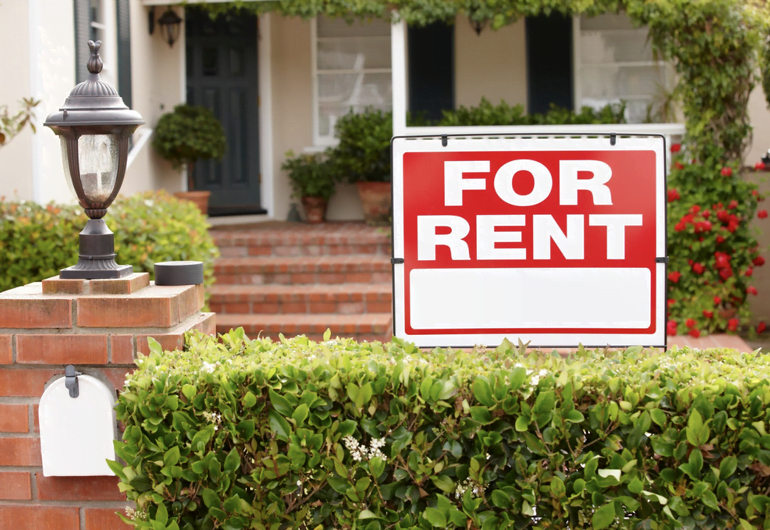
Investing in rental properties is a great starting point for real estate investors. Rental properties can provide cash flow and generate value from appreciation. Investors also get tax incentives and deductions from owning real estate.
While it can be a lucrative method of real estate investing, there’s a lot to know before investing in rental properties. This comprehensive guide will show you how to start investing in rental properties as a beginner. We’ll go over what it takes to invest in rental properties, common mistakes to avoid, and things to know before you buy your first rental.
What is a rental property?
A rental property is a residential or commercial property that’s leased or rented to a tenant over a set period of time. There are short-term rentals, like vacation rentals, and long-term ones, like those under a one-to-three-year lease.
Residential rental properties are one- to four-family homes, which include:
- single-family homes,
- duplexes,
- triplexes, and
- quadplexes.
Types of commercial rental properties include:
- multifamily (apartment complexes),
- industrial (such as a warehouse or self-storage),
- office space,
- retail space, and
- multi-use.
Residential rental properties are often more accessible to beginners because they’re less expensive. Less money is required upfront and that often means that it’s easier to get financing. While there are exceptions, residential rental properties are also typically easier to manage. In most cases, managing one tenant is easier than managing twenty.
For these reasons, this comprehensive guide to investing in rental properties is focused on residential rentals.
Most investors buy a rental property with the goal of producing positive cash flow — earning more income each month than they spend on expenses. Not every rental has a positive cash flow at first, but building up to one is a common goal of rental investing.
Owning a rental property is an active form of real estate investing and requires time, dedication, and involvement. Being a landlord isn’t for everyone. As you’ll see, there’s much work involved in identifying, analyzing, buying, and managing a quality rental property.
While there are options for outsourcing some of these active tasks, it’s rarely 100% passive, and there are always risks.
Do you think investing in a rental property might be a good idea for you? Keep reading to find out where to start and how to best prepare yourself for the project at hand.
Let’s take a look at the seven steps you’ll need to take to invest in rental property:
1. Determine where you want to invest
Beginning real estate investors often want to purchase rental properties in their backyard. That could mean in the same ZIP code as their current residence, the same city, or the same state. However, this may not be an option depending on the market you live in, nor is it always the best choice.
If you live in a neighborhood where property values are on the upper end of the market, rent may not support a positive cash-flowing rental property.
Maybe you live in an expensive market like San Francisco, where the average single-family property was $1.6 million in July 2019. You might not have the funds available to buy a rental property nearby. If that’s the case, look in other markets for your first investment.
While it may be easier to manage a rental that’s only 10 minutes from your home instead of two states away, you can invest in any market. If you’re not going to invest in your backyard, take a high-level view at other markets, looking for areas that meet these criteria:
- The demand for rental properties is high — housing supply and vacancy rates are low.
- Job growth is stable or growing. Economic expansion, job growth, and population growth are good indicators.
- The average rental income supports the purchase price of the rental property and aligns with the funds you have available to invest. A $200,000 rental property won’t generate much of a return if you can only rent it for $700. And if you only have $20,000 to put down, you probably won’t get bank financing on a $200,000 rental property.
There are several free and paid resources to help you conduct market research on various areas of the country. Use them for information on the economic growth, housing demand, vacancy rates, average income, and average housing prices in different areas.
- Mashvisor is a partially free website for assessing vacation rental prices, the current supply, and the viability of a potential investment. Some features require a paid upgrade.
- Local Market Monitor is a paid site that provides market demographics, market investment ratings, and capitalization rates.
- Department of Numbers is a free site with population, job, housing, and economic statistics.
- Census.gov is a good source of vacancy rates.
- PwC’s Emerging Trends in Real Estate 2019 shows the top U.S. real estate markets.
After identifying a market to invest in, look at that market on a micro level. Identify specific neighborhoods or ZIP codes to target while considering the following for each specific area:
- Supply and demand for housing, including any future development that will increase demand.
- Crime rate.
- School ratings.
- Average property value.
- Average rent.
- Any specialized markets to stay away from or target — such as student or affordable housing.
2. Determine what you want to invest in
While single-family rental properties are one avenue of investing, they’re not the only option. You could own a duplex, triplex, quadplex, or something even larger (if you’re interested in commercial rentals). Decide if you’d like to own vacation rentals or long-term rental properties, too.
No matter what property type you choose, it’s essential to know what qualities of that property type are in demand. This includes the size of the unit or home, the number of bedrooms and bathrooms, or possible amenities such as a pool or fireplace.
Find out if there’s an oversaturation or undersupply of a specific property type. You might find, for example, that an area has too many one-bedrooms and few two-bedrooms available for rent. You can do this by looking at the current inventory on the market on real estate rental industry sites such as Zillow, HotPads, or ForRent.com. Talking to a local real estate agent is another great way to get information on a specific market.
Make sure you know what you’re looking for in a rental property, including:
- square footage,
- number of bedrooms or bathrooms,
- type of build (e.g., wood or concrete),
- type of parking available, and
- property type (e.g., single-family residence, condo, townhome, duplex, triplex, or fourplex).
It’s not uncommon to have different sets of criteria for different neighborhoods.
3. Find potential rental properties to invest in
Once you’ve narrowed down your market and know your criteria, you can search for properties to invest in. There are several ways to find investment properties.
Search in the MLS or work with a Realtor
The most common way to identify potential investment properties is by searching the multiple listing service (MLS). Websites like Realtor.com and Zillow let you set up search parameters and alert you when a new listing matches those criteria.
You can also reach out to a real estate investment agent in the area and ask them to set up those same alerts. A quality realtor can be an excellent source for connections to banks, lending institutions, contractors, or suppliers that will come in handy when buying a rental property.
They may also be able to bring you pocket-listings, which are listings that haven’t gone live on the MLS yet.
Buy a turnkey rental property
Certain companies specialize in selling turnkey rental properties. These rentals require little to no work after buying — this is a passive investment mostly for cash flow. (Of course, no rental is completely passive; you may have to get involved if things take an unexpected turn.)
In most circumstances, the properties have been renovated, have an existing tenant in place, and have a third-party management company handling the landlord responsibilities.
However, just because it’s a turnkey investment doesn’t mean it’s a worthwhile one. Research the market to determine if the purchase price, rental rate, and location of the property support the investment.
Work with a wholesaler
A real estate wholesaler finds off-market investment opportunities at below-market prices. They negotiate a low purchase price with the seller and assign the contract to a third-party buyer at a higher price. The wholesaler makes a profit from the difference between the purchase price and the sales price.
Typically, wholesale properties require a 100% cash payment to close. They often need renovations or improvements, too, so they might not qualify for financing. There are alternative lenders, like hard money and private lenders, that can help with cash for closing and funds for repairing the property. These lenders, however, can charge high interest rates and only loan money for a short period of time.
While wholesalers can have quality off-market investment opportunities, financing difficulties can make it hard to work with them.
Direct marketing
Another way to find a potential rental property to invest in is by conducting a marketing campaign. You might use targeted online marketing or put out bandit signs. Direct mail marketing is another popular option.
In a direct mail campaign, an investor sends a series of letters or postcards to off-market sellers. Companies like List Source and Data Tree let you create and buy lists of people that meet certain criteria. You might look for owners in foreclosure or pre-foreclosure, properties that recently went through probate, or properties owned free and clear (without a mortgage).
You can narrow the list down by property features, such as the number of bedrooms and bathrooms, or by county, ZIP code, or city.
You can run your own mail campaign by typing or handwriting a series of letters or postcards. You can also hire a third-party company to do it for you.
This method of finding potential investments involves the most effort and cost. It can be a great source for finding off-market rental properties, but it may not be the right option for you. If you’re willing to put in the time, effort, and funds required to run a successful mail campaign, this is a quality source of off-market inventory.
Leave a comment

